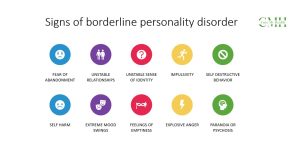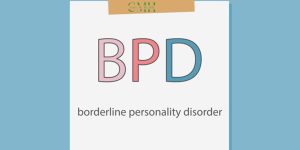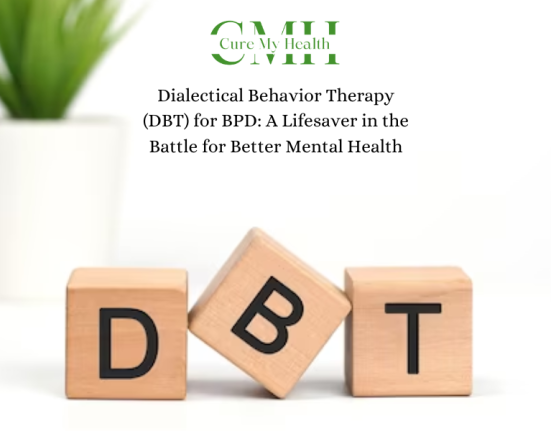Introduction
Borderline Personality Disorder is a mental health disorder characterised by a persistent pattern of instability in mood, behaviour, self-image, and interpersonal relationships. People with BPD may experience intense emotional episodes, have difficulty regulating their emotions, and exhibit impulsive and self-destructive behaviours. They may also struggle with a deep sense of emptiness and fear of abandonment, leading to tumultuous relationships with others. The exact cause of BPD is not fully understood, but it is believed to be a combination of genetic, environmental, and developmental factors. BPD often co-occurs with other mental health disorders, such as depression, anxiety, substance abuse, and eating disorders. BPD can be challenging to diagnose and treat, but therapy, medication, and support from loved ones can help manage symptoms and improve quality of life. With proper treatment and support, many people with BPD are able to lead fulfilling and meaningful lives. Borderline Personality Disorder (BPD) is a mental health disorder that affects a person’s behaviour, emotions, and relationships. Individuals with BPD may have difficulty regulating their emotions and exhibit impulsive and self-destructive behaviours, leading to difficulties in their personal and professional lives.
The symptoms of BPD include intense mood swings, impulsivity, self-harm or suicidal behavior, fear of abandonment, unstable self-image, chronic feelings of emptiness, and unstable and intense relationships. People with BPD may also struggle with dissociation, where they feel disconnected from their thoughts, feelings, and sense of self. BPD is typically diagnosed by a mental health professional after a thorough assessment of symptoms, medical history, and family history. It is important to note that BPD is a complex and often misunderstood disorder, and a proper diagnosis and treatment plan can help individuals manage their symptoms and improve their quality of life. Treatment for BPD typically includes psychotherapy, medication, and support from loved ones. Dialectical Behavior Therapy (DBT) is a type of therapy that has been specifically designed for the treatment of BPD and has been shown to be effective in reducing symptoms and improving overall functioning. In addition, medications such as mood stabilisers, antidepressants, and antipsychotics may be prescribed to help manage symptoms.

What exactly causes Borderline Personality Disorder BPD?
The exact cause of Borderline Personality Disorder (BPD) is not fully understood, but research suggests that it is likely caused by a combination of genetic, environmental, and developmental factors.
Genetic factors may play a role in the development of BPD. Studies have shown that people with BPD are more likely to have a family history of the disorder, indicating that there may be a genetic predisposition. Genetic factors are believed to play a role in the development of Borderline Personality Disorder (BPD). While the exact genes involved in BPD are not fully understood, research suggests that genetics may account for about 40-60% of the risk for developing the disorder.Studies have shown that individuals with a family history of BPD are more likely to develop the disorder themselves, indicating that there may be a genetic component. In addition, studies of twins have suggested that there is a higher concordance rate for BPD in identical twins compared to fraternal twins, further suggesting a genetic component.
However, genetics alone are not sufficient to cause BPD. Environmental and developmental factors, such as childhood trauma or abuse, also play a significant role in the development of the disorder. Overall, the exact genetic factors involved in BPD are not fully understood, and further research is needed to fully understand the role of genetics in the development of the disorder.
Environmental factors, such as childhood trauma or abuse, can also contribute to the development of BPD. Traumatic experiences, such as neglect, physical or sexual abuse, or parental separation or divorce, can lead to disruptions in a child’s emotional development, making them more susceptible to BPD. Borderline Personality Disorder (BPD) is a complex mental health condition that is believed to be caused by a combination of genetic, environmental, and social factors. While there is no single environmental factor that can cause BPD, certain factors may increase the likelihood of developing the disorder. One environmental factor that has been linked to BPD is childhood trauma or abuse, which can include physical, emotional, or sexual abuse, neglect, or separation from caregivers. Traumatic experiences during childhood can affect the developing brain and lead to difficulties with emotional regulation and interpersonal relationships, which are hallmark features of BPD.Other environmental factors that may contribute to the development of BPD include chronic stress, substance abuse, and unstable living situations. These factors can also contribute to difficulties with emotional regulation and increase the risk of impulsive behavior, which are common symptoms of BPD. It’s important to note that not everyone who experiences these environmental factors will develop BPD, and not everyone with BPD has experienced these factors. BPD is a complex condition that is influenced by a range of factors, and a thorough assessment by a mental health professional is necessary to accurately diagnose and treat the disorder.

Developmental factors ,such as disruptions in attachment or difficulties in emotional regulation, can also contribute to the development of BPD. Children who have had inconsistent or unstable relationships with their primary caregivers may have difficulty developing a stable sense of self and regulating their emotions.Borderline Personality Disorder (BPD) is a complex mental health condition that is influenced by a variety of factors, including genetic, environmental, and developmental factors. Developmental factors can play a significant role in the development of BPD. Here are some of the ways in which developmental factors can contribute to the development of BPD:
- Childhood Trauma: One of the most significant developmental factors that can lead to the development of BPD is childhood trauma. Traumatic experiences such as physical or emotional abuse, neglect, or sexual abuse during childhood can have a lasting impact on the developing brain and increase the risk of developing BPD in adulthood.
- Insecure Attachment: Another developmental factor that can contribute to BPD is an insecure attachment style. Individuals who have experienced inconsistent, neglectful, or abusive caregiving during childhood may develop an insecure attachment style, which can lead to difficulties in regulating emotions and forming stable relationships in adulthood.
- Emotional Dysregulation: Emotional dysregulation is a common symptom of BPD and can be traced back to early childhood experiences. Children who have experienced inconsistent or invalidating responses to their emotions may struggle to regulate their emotions as adults, leading to intense and unstable moods.
- Cognitive Vulnerabilities: Certain cognitive vulnerabilities, such as a tendency towards black and white thinking, catastrophizing, or perfectionism, may increase the risk of developing BPD. These cognitive vulnerabilities may be influenced by early life experiences, such as criticism or pressure to excel.
In summary, developmental factors such as childhood trauma, insecure attachment, emotional dysregulation, and cognitive vulnerabilities can all contribute to the development of BPD. Understanding these factors can help clinicians and individuals with BPD better understand the root causes of the condition and develop effective treatment strategies.
It is important to note that not everyone who experiences these risk factors will develop BPD, and not everyone with BPD has experienced these risk factors. Additionally, other factors such as neurobiological and cognitive factors may also contribute to the development of BPD.

Treatment for BPD
Borderline personality disorder (BPD) is a mental health condition characterised by instability in emotions, behaviour, self-image, and interpersonal relationships. Treatment for BPD usually involves a combination of psychotherapy, medication, and self-help strategies.
1.Psychotherapy:Psychotherapy, also known as talk therapy, is the cornerstone of BPD treatment. Different types of psychotherapy that have shown effectiveness in treating BPD include:
- Dialectical Behavior Therapy (DBT): DBT is a type of therapy that emphasizes acceptance and change strategies. It is a highly structured therapy that focuses on helping people learn coping skills to manage emotions, improve interpersonal skills, and reduce impulsive behavior.
- Mentalization-Based Therapy (MBT): MBT is a form of psychodynamic therapy that focuses on helping individuals understand their own and others’ thoughts and feelings. It aims to improve social functioning and relationships.
- Schema-Focused Therapy (SFT): SFT is a type of therapy that targets maladaptive schemas or core beliefs about oneself and others that lead to dysfunctional behaviors.
- Cognitive Behavioral Therapy (CBT): CBT is a type of therapy that helps individuals change their negative thinking patterns and maladaptive behaviors.
2. Medication: Medication may be used in combination with psychotherapy to help manage symptoms of BPD.
Commonly used medications include:
- Antidepressants: Antidepressants such as selective serotonin reuptake inhibitors (SSRIs) and tricyclic antidepressants (TCAs) can help with depression and anxiety.
- Mood stabilizers: Mood stabilizers such as lithium and anticonvulsants can help with mood swings and impulsivity.
- Antipsychotics: Antipsychotics can help with psychotic symptoms such as paranoia and dissociation.
3. Self-Help Strategies: Self-help strategies can also be helpful in managing symptoms of BPD. These may include:
- Practicing self-care: Taking care of oneself physically and emotionally, such as exercising regularly, getting enough sleep, and eating a healthy diet.
- Developing a support network: Building supportive relationships with family, friends, and peers.
- Mindfulness: Mindfulness practices, such as meditation and yoga, can help individuals stay present in the moment and manage intense emotions.
- Seeking out education and resources: Learning about BPD and seeking out resources such as support groups can help individuals better understand and manage their symptoms.
It’s important to note that treatment for BPD can be a long-term process, and it may take time to find the right combination of therapies and medications that work for an individual. It’s also important to work with a mental health professional who has experience in treating BPD.

Conclusion
In conclusion, borderline personality disorder (BPD) is a mental health condition characterised by instability in emotions, behaviour, self-image, and interpersonal relationships. It can significantly impact an individual’s life, but with the right treatment, many people with BPD can manage their symptoms and improve their quality of life. Treatment for BPD usually involves a combination of psychotherapy, medication, and self-help strategies. Psychotherapy, especially Dialectical Behavior Therapy (DBT), is considered the cornerstone of BPD treatment. Medication can also be used in combination with psychotherapy to manage symptoms. Self-help strategies such as practicing self-care, developing a support network, and seeking out education and resources can also be helpful. It’s important to note that treatment for BPD can be a long-term process, and it’s crucial to work with a mental health professional who has experience in treating BPD.









